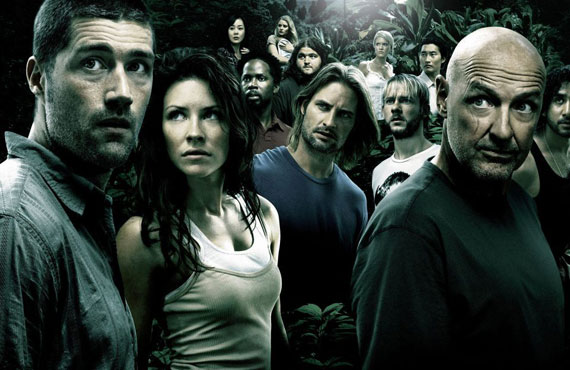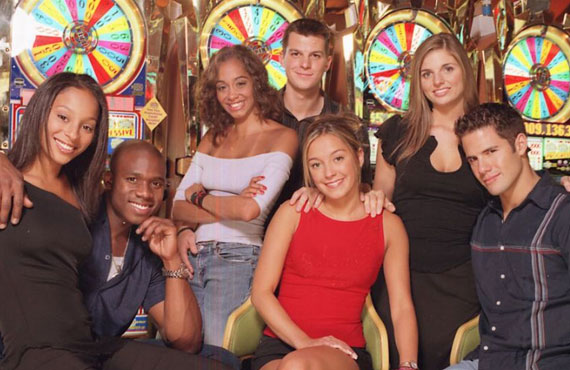A Taxonomy of TV Clip Shows
-
 (Photos: NBC, HBO, MTV)
(Photos: NBC, HBO, MTV)It probably seemed like television had evolved past the need for clip shows. A staple of network TV for many deacdes, the idea of airing an episode consisting of all or mostly clips from previously-aired episodes feels quaint or even corny today. That's mostly because clips shows were a tool of necessity that just isn't needed anymore. Back in the day, when network shows had episode orders in the twenties and even thirties, and previously-aired episodes weren't available for months if not years, a clip show was a way to catch audiences up on moments they may have missed, while providing a crucial cost-cutting measure for a series that may have run into budget troubles.
Nowadays, episode orders are much lower, and there's been an entire media ecosystem built around making previously-aired episodes available online, rendering the tradional clip show all but extinct Then the coronavirus happened, TV production closed up, and suddenly there are once again programming hours to fill with not enough original material to fill them.
One such franchise that found itself suddenly in need of new material was ABC's The Bachelor, which this summer attempted to thread the needle by airing The Bachelor: The Greatest Seasons — Ever! as a way of re-packaging old seasons and sprucing up what would normally be called a regular old clip show. However you slice it, The Bachelor is just the latest to employ one of TV's least celebrated but most functional tropes. Here's how they've broken down over the years:
Sitcom Framed Clips

The classic version of the clip show — the one you're probably imagining when we talk about the concept — is the thing where TV shows set up a very simple framing scenario, often as simple as a few characters sitting down and reminiscing, and using it as a jumping off point for clips from previous episodes. Sometimes the clips have a thematic throughline; sometimes they're just greatest hits. The point is, production only needed to use one room and probably wrapped up filming in a day, saving all kinds of money. The prime example of this is The Golden Girls, which would often sit Dorothy, Blanche, Rose, and Sophia around their kitchen coffee table as they reminisced about their old times over a cheesecake. The Golden Girls would pull this off once a season, more or less, helping to alleviate the 20+ episode orders of its era.
Milestone Episodes

This is when a show chooses to celebrate reaching, say, 100 episodes by airing a highlight reel. Sometimes these can take the form of the above-mentioned frame-story episodes, with characters reminiscing about things that have happened over the years. Other times, these clip shows can be supplemental to a regular episode, aired as a one or two-hour programming block. Seinfeld did this with their 100th episode, airing the two-part clip show featuring Jerry breaking the fourth wall to address the audience while archly introducing various clip packages.
Series Finale Event Programming
Seinfeld did this too, airing their second clip show immediately preceding the series finale. This one didn't have any frame story at all and was just a pure highlight reel, ending with a discordantly emotional behind-the-scenes montage set to Green Day's "Time of Your Life." Bob Costas hosted a Cheers clip show directly preceding that show's much-heralded finale. In rare cases, as with The Tonight Show Starring Johnny Carson, the clip show WAS the finale, as Carson eschewed guests for his final hour as host and instead presented a series of the show's highlights in front of his studio audience. Far more often, though, the clip show accompanies the finale as a way to goose said finale as a piece of event programming, or as a kind of fan service. Recent examples include Modern Family and The Good Place. For its part, HBO has aired documentary-style farewell retrospectives like this before the series finales of shows like Six Feet Under and Sex and the City.
Self-Aggrandizing Docu-Clip Show
A rarity, but a favorite. Sometimes, if the acclaim for a TV show is just right, you can spruce up the usual clip-show format and turn it into something far more prestigious, like when screen legend Henry Fonda lent his gravitas to All in the Family for their clip show (which aired as an unnumbered episode between episodes 99 and 100). Cheers celebrated 200 episodes with a clip show that was framed by a panel discussion with the Cheers cast (including a return appearance by Shelly Long) and hosted by John McLaughlin. In its third season, The West Wing chose to celebrate itself by airing a clip show framed by interviews with real-life former White House staffers like Dee Dee Meyers, Paul Begala, and Peggy Noonan, and former U.S. presidents Bill Clinton, Gerald Ford, and Jimmy Carter. While the politicians never discussed The West Wing directly, their accounts of working inside the White House were paired with thematically related clips from the show.
Serialized Catch-Up

The window of time in the 2000s between the rise of the serialized drama craze (brought on by Lost, among others) and the streaming-television revolution meant that there was a time when viewers needed to keep up with layered, byzantine plots without the benefit of reruns or streaming episode libraries. So a lot of the show relied on clip shows that aired either mid-season (usually after a hiatus) or before a new season began. These specials served to catch fans up on plot material they may have either missed or forgotten. Lost utilized this tactic quite a bit, but it was also helpful for shows like Alias and Battlestar Galactica.
The Sh*t They Didn't Show

The reality TV era ushered in a genre of TV shows where production crews would film for months on end, sometimes all day and night, only to air a season comprised of a dozen programming hours or less. What to do with all that excess footage? Networks like MTV and Bravo soon got the idea to air clip shows of cut material as a supplemental episode at the ends of seasons. MTV's The Real World, Road Rules, and The Challenge branded these specials "The Sh*t They Should've Shown," mostly compiling silly or slapstick moments that never fit into the storylines (only rarely would things like arguments or fights get cut). Bravo has brought this tactic into its Real Housewives franchise, airing "Secrets Revealed" episodes that offer unaired footage and occasional commentary.
Fake Clip Show Parodies
This may feel like a post-modern invention, but not so fast. While shows like Community and Friends definitely got creative by skewering the old clip-show traditions and delivering an episode with a clip-show-esque frame structure that led to fake clips (i.e. brand new scenes designed to mimic/mock greatest-hits clips), even old reliable The Golden Girls got in on that action, though without the anarchist sensibility. They'd gather Dorothy, Rose, Blanche, and Sophia around that same kitchen table and have them reminisce, only they'd remember events that the show had never aired, like how the four of them came to live together. These weren't intended to be fakeouts for the audience, like Community's were, but they really do mess with your sense of equilibrium when you come across a Golden Girls rerun in syndication and you're trying to remember if you're watching a genuine clip show or just a flashback episode. And that's how The Golden Girls stays masters of the clip show genre.
Joe Reid is the senior writer at Primetimer and co-host of the This Had Oscar Buzz podcast. His work has appeared in Decider, NPR, HuffPost, The Atlantic, Slate, Polygon, Vanity Fair, Vulture, The A.V. Club and more.
TOPICS: The Bachelor: The Greatest Seasons — Ever!, All in the Family, The Challenge, Cheers, Community, Lost, The Real World, Seinfeld, Sex and the City, The Simpsons, Six Feet Under, The West Wing, The Real Housewives Franchise
- TV Today: From Villain to Hero: Re-live Nick Viall's Bachelor Journey
- The Bachelor: The Greatest Seasons — Ever! is the best way to watch the franchise
- Chris Harrison is in quarantine, so JoJo Fletcher will reportedly fill in as Bachelorette host
- TV Today: The Bachelor Remembers When Jason Mesnick Enraged America